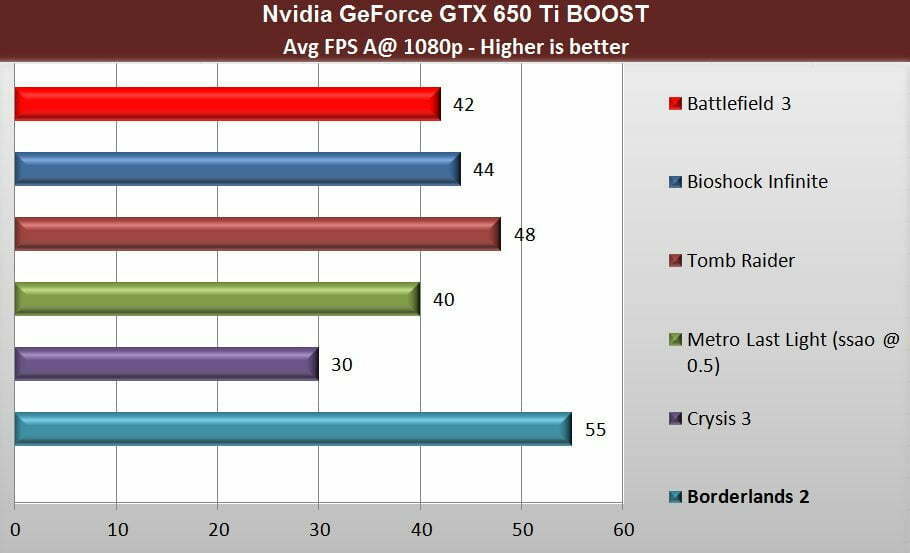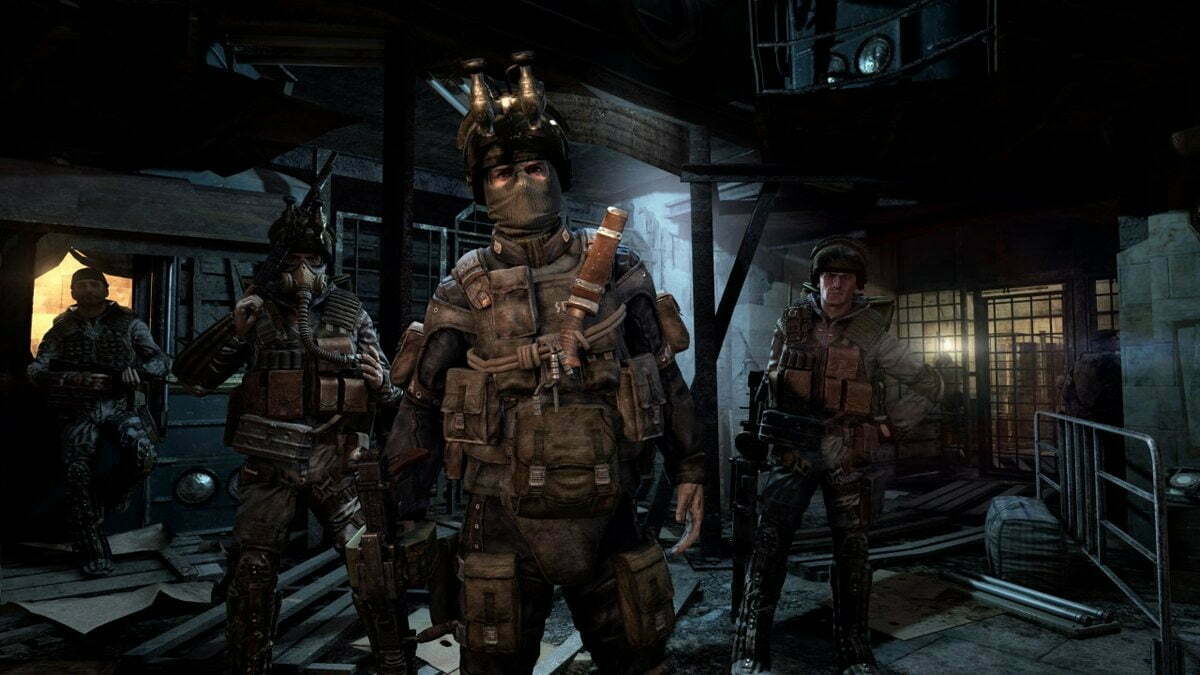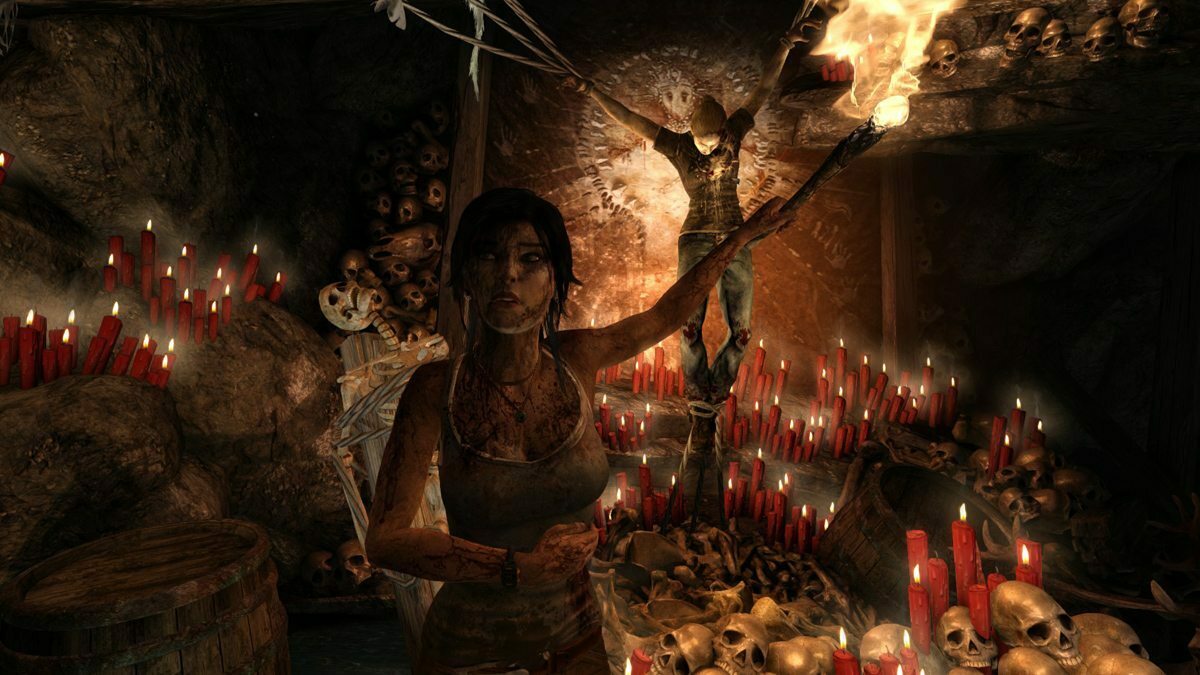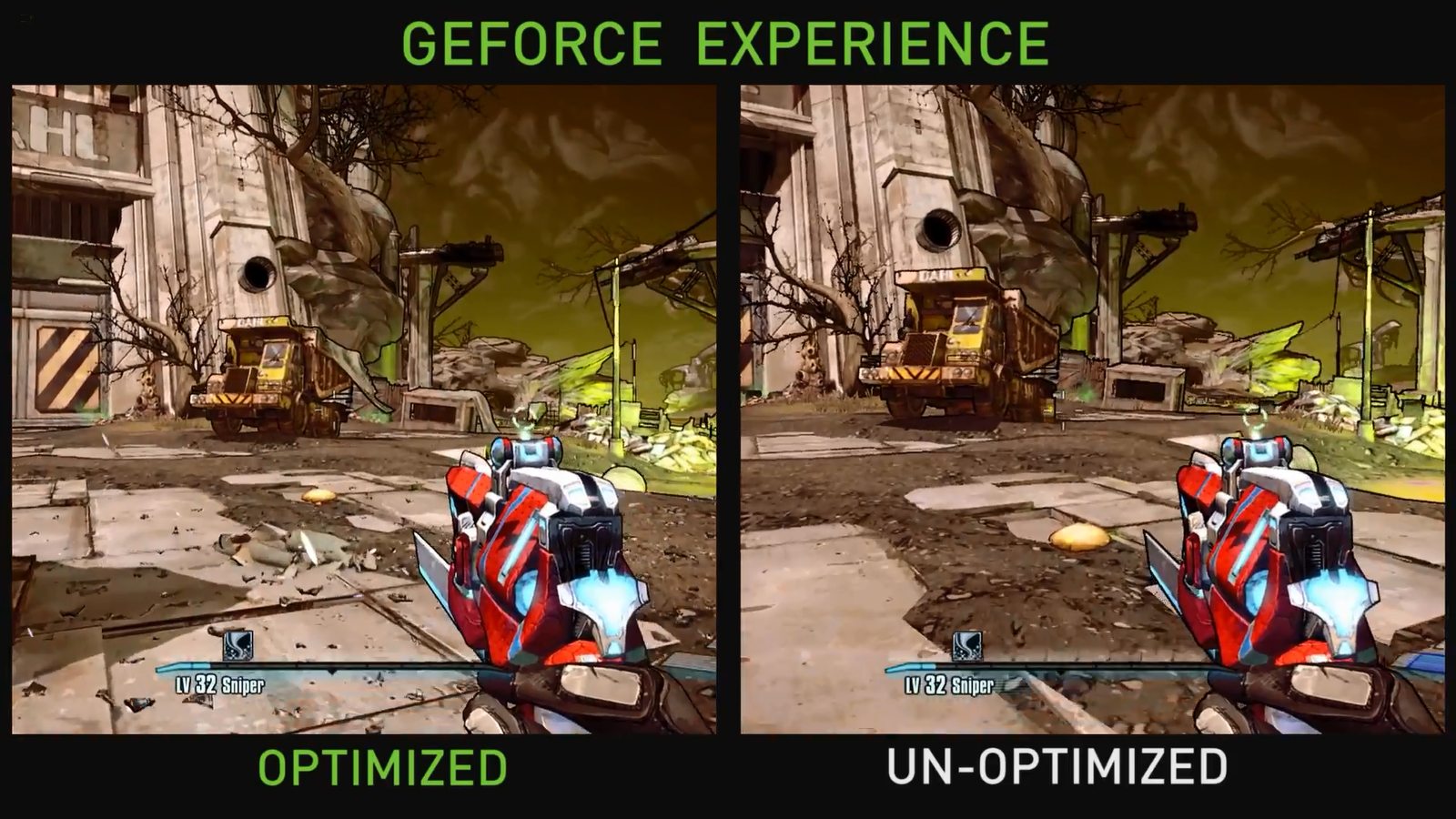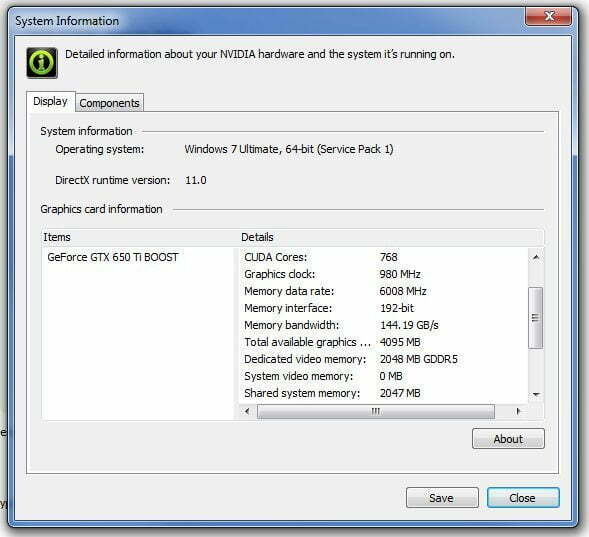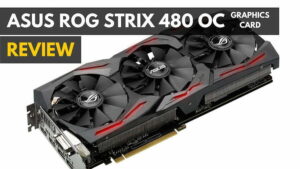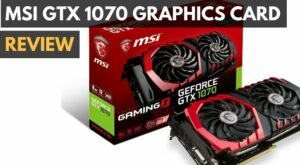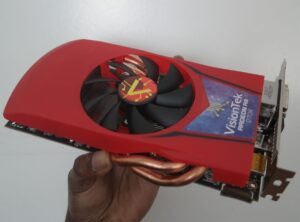There are usually two main hurdles for folks trying to valiantly evaluate the transition from console to PC gaming. These are cost and convenience. I love consoles for their standardized platform and convenient price point. PCs can be expensive and its daunting to maintain a stable rig. Tack on the exorbitant cost for high end video cards and you have the makings of a console loyalist–just add doubt and stir. However, Nvidia’s newest consumer level video card should help bridge the gap between console convenience and the texel crunching power of a well-configured PC.
Enter the Nvidia’s GeForce GTX 650 Ti BOOST video card–“tuned for sweet-spot gaming”. The card we have today is a reference card shipped to us directly from Nvidia. This is what EVGA, Asus, Gigabyte and others use to make their own wicked versions with expanded memory and higher clock speeds. The 650 Ti BOOST is a low cost card meant to achieve stable frame rates in today’s most demanding games when playing at a 1080p HD resolution. It’s not a card for the hardcore PC gaming crow–at least not by its lonesome. But I’ll get to that. At a cost that reaches roughly half the price of a modern console, the 650 Ti BOOST could be the perfect baby step into affordable PC gaming.
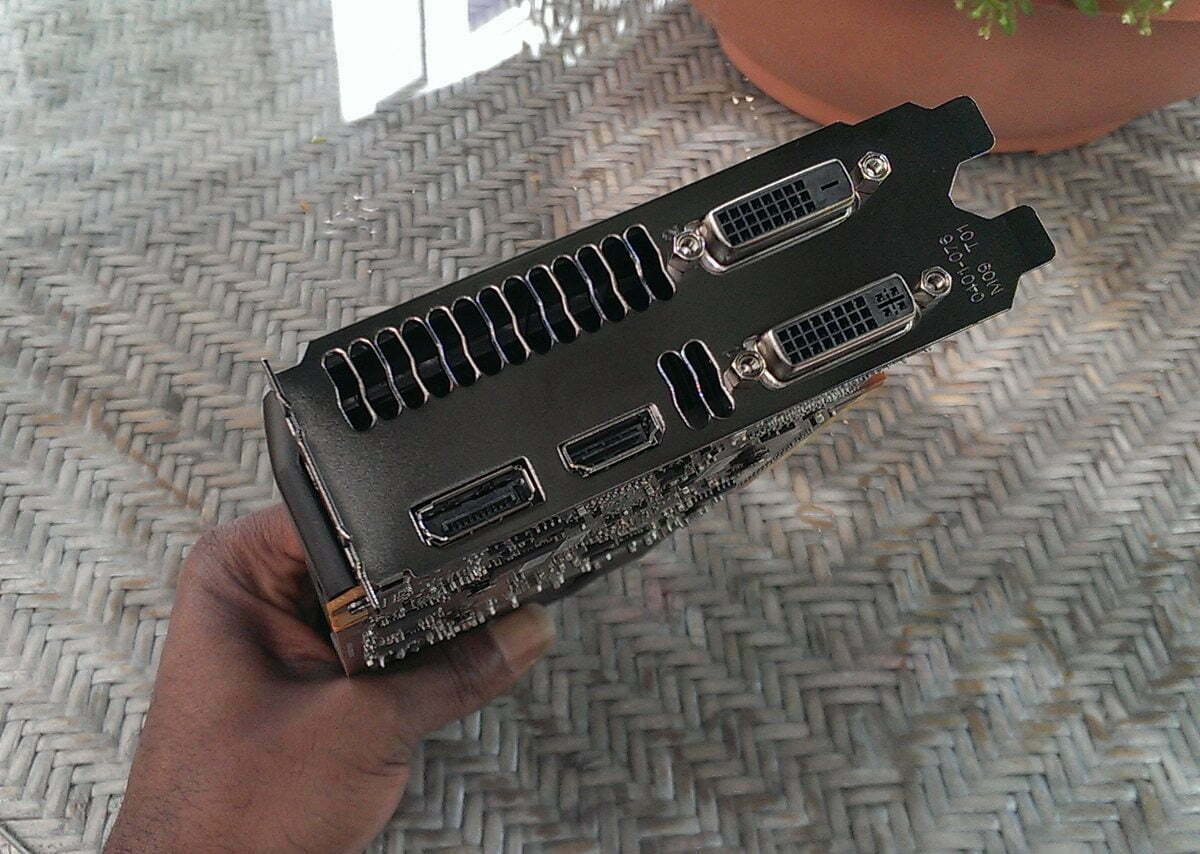
Let’s look at the specs. This is a current PCI-E video card. It features 768 CUDA cores, a base clock speed of 980Mhz that will “boost” to 1033Mhz. It supports PCI-E 3.0 found on most modern motherboards. It supports 2-Way SLI so two 650 Ti BOOST cards could be installed into a single system and benefit from dual performance. The texture fill rate hits 62.7GT/s and the features 2GB of onboard GDDR5 video memory. The memory clock is a nice 6008Mhz at 0.33ns. Not bad for a sub-$200 card. The is also available in 1GB and 4GB versions.
The 650 Ti BOOST is among the 600 series offerings and is probably the last card to be made before Nvidia begins shipping the high end versions of its 700 series later this week. But this little puppy does all that its other 600 series siblings can. It features support for Microsoft DirectX 11, Nvidia’s SMX engine, GPU boost tech, Adaptive Vertical sync for syncing frames and enabling more stable frame rates. You also have your choice of inputs including DVI, HDMI and DisplayPort connections.
Installation is as easy as you might expect. But for the uninitiated… Power down your computer, and unplug the power supply (450W PSU min required). Remove your current video card and place the 650 Ti BOOST in its place, making sure you are inserting it in a PCI-E 2.0 or 3.0 card slot. Then connect the 6-pin power cable from your power supply. Now close your case and power your rig back on. We are using Nvidia’s most current Beta drivers version 320.14. I download drivers and have them ready upon installing. But you can download them after installation.
The GTX 650 Ti BOOST supports 2560 x 1600 resolution. But even Nvidia states the card’s best use scenario is 1080p gaming. Remember it’s tuned for “sweet-spot” gaming. That’s 1080p! At that resolution I was pleasantly surprised. Even at sub-60 frames per second the 650 maintains very smooth framerates. Let’s take a look.
The big boy on the block is Deep Silver’s recently acquired Metro Last Light. This is the industry’s current trend-setter for visual fidelity. The game supports DirectX 11 features and Nvidia’s PhysX tech for physics calculations and looks absolutely gorgeous throughout. Metro is a bit less finicky than the previous Metro 2033. It seems better optimized for smoother gameplay at sub-60 frames per second. The 650 Ti BOOST handles virtually everything at max settings. Just steer clear of SSAO beyond 0.5. Moving it up to 2.0 or higher will see you FPS cut in half for an uplayable experience.
Beyond that, the 650 Ti BOOST kept gameplay running at a very playable clip. I even found myself repeating levels previously played well afterI had my bench results. All these are great games and the 650 Ti BOOST dresses them up real “purty like…” I prefer playing at 60 frames per second minimum at much higher display resolutions. If you’re the same, then you already know this card is not for you. However, you could pair two of these together in an SLI configuration to game either above 60fps or maintain the same listed results at higher resolutions.
Bottom Line: This is really a great card for the money. Moreover, it does hit a sweet spot, as the marketing hyperbole states. But lets be clear. The “sweet spot” for hardcore gamers is 60 fps minimum. But for more casual gamers, especially those coming from consoles and their 30-ish fps standard, anything above 30 at 1080p is indeed a sweet spot. Padding the list of goodies, there are some great tools available for GeForce users. EVGA Precision and MSI Afterburner allow you overclock your cards speeds thereby gaining a few precious frames per second. Also Nvidia offers their GeForce Experience tool. It analyzes your system to determine and set the most optimal game settings based on your system and video cards. It’s a great tool for those new to computer gaming or those who just want to be more hands-off.
*Enthusiasts take note: Don’t fret, hardcore gamers. We should have day-1 coverage of something special later in the week.
**Nvidia reference card are not available for purchase. They are used by end card partners (Asus, EVGA, Gigabyte et al) as a referential guide when designing their own cooling solutions and expanded memory. When reviewed , they are used to gauge performance of retail solutions.
